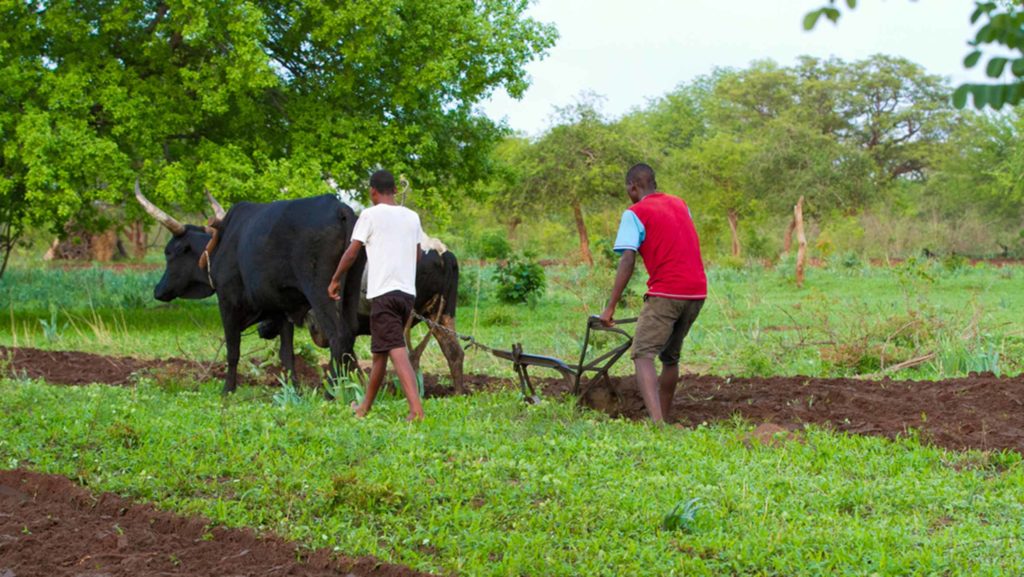
Tool 12 – Social Impact and Opportunities Assessment
A social impact and opportunities assessment (SIOA) identifies negative and positive impacts from a project. A SIOA will discover positive impacts whilst helping to offset negative influences. This tool is best used after completing a social baseline study. The input provided from community members and other stakeholders is hugely beneficial, often revealing potential impacts or opportunities. Specific inclusion of negative impacts on women, vulnerable or marginalised groups is essential.
Step Guide
STEP
1
Review social baseline survey (p136)– looking for concerns and opportunities (refer to tool 9 -Development Opportunity Ranking)
STEP
2
Assess potential impacts and opportunities (p137). Identify areas needing impact management programs and whether there are cumulative impacts in the project’s broader regions. For example road dust from roads leading to several separate mining projects might create a serious environmental and social health impact
STEP
3
Manage (p136) and possibly mitigate the identified impacts whilst enhancing opportunities.
STEP
4
Reassess the impacts and opportunities taking the proposed management measures into account
STEP
5
Work with partners and the community on participatory development plans (p136) which address priority and mitigation programs
STEP
6
Review management measures and programs regularly, see tools 19 and 20 (p187) for monitoring and evaluation methods
STEP
7
If cumulative impacts are likely to occur, a regional management approach with government and other civil organisations should be initiated as early as possible. Tool 1 will help identify appropriate stakeholders and partners to work with (see case study below)
Further Reading:
- An explained example of an impact assessment framework – relevant to Step 2 (138)
- Module 5 from Mining: Partnerships for Development Toolkit, provides further information on measuring positive and negative contributions to communities
- An example table of potential impacts/issues before and after mitigation measures (p140)
Community, Economics, Environment, Ethical Business, Management, Rehabilitation
Contributing to community health and economic development through improved agricultural techniques
Thanks to a community development program instituted by the company, local communities living near Xstrata’s copper mine in Las Bambas, Peru, are now benefiting from agricultural improvement projects that they have helped to identify, prioritize and implement.
Sources:
There are many references on SIOA, and it is frequently a rather detailed process. This tool intends to give an outline of the broad processes involved. For greater detail, the following sources will be useful:
Aim for Human Rights, Guide to Corporate Human Rights Impact Assessment Tools, 2009.
Asian Development Bank, Gender Checklist: Agriculture, 2006.
Danish Institute for Human Rights, Human Rights Compliance Assessment (HRCA) Quick
Check, 2006.
ICMM, Good Practice Guidance on Health Impact Assessment, London, 2010.
IFC, Strategic Community Investment: A Good Practice Handbook for Companies Doing
Business in Emerging Markets, Washington DC, June 2010.
IFC, Strategic Community Investment: A Quick Guide, Highlights from IFC’s Good Practice Handbook, Washington DC,February 2010.
IFC, Guide to Human Rights Impact Assessment and Management, Washington DC, 2010.
IFC, Introduction to Health Impact Assessment, Washington DC, 2009.
IFC, Projects and People: A Handbook for Addressing Project-Induced In-Migration, Washington DC, December 2009.
IFC, Good Practice Note: Addressing the Social Dimensions of Private Sector Projects, Washington DC, 2003.
International Association for Impact Assessment (IAIA), IAIA website, 2012.
March, C., Smyth, I. and Mukhopadhyay, M., A Guide to Gender-Analysis Frameworks, Oxfam GB, Oxford, 1991.
Minerals Council of Australia, Socioeconomic Benefits and Impacts: An Assessment and Planning Toolkit. Canberra, 2010.
Oxfam Australia, Guide to gender impact assessment, Melbourne, 2009.
SIAhub, Social Impact Assessment website, 2012.

